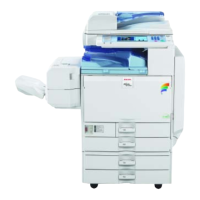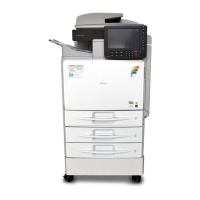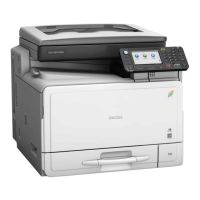2. Enter "http://(the machine's IP address or host name)/" in the address bar.
When entering an IPv4 address, do not begin segments with zeros. For example: If the address is
"192.168.001.010", you must enter it as "192.168.1.10" to connect to the machine.
The top page of Web Image Monitor appears.
3. Click [Login].
The network administrator can log on.
Enter the login user name and login password.
4. Click [Configuration], and then click [Device Certificate] under "Security".
5. Check the radio button next to the number of the certificate you want to create.
6. Click [Create].
7. Make the necessary settings.
8. Click [OK].
The setting is changed.
9. Click [OK].
A security warning dialog box appears.
10. Check the details, and then click [OK].
"Installed" appears under "Certificate Status" to show that a device certificate for the machine has
been installed.
11. Click [Logout].
• Click [Delete] to delete the device certificate from the machine.
Creating the Device Certificate (Certificate Issued by a Certificate Authority)
Create the device certificate using Web Image Monitor. For details about the displayed items and
selectable items, see Web Image Monitor Help.
This section explains the use of a certificate issued by a certificate authority as the device certificate.
1. Open a Web browser.
2. Enter "http://(the machine's IP address or host name)/" in the address bar.
When entering an IPv4 address, do not begin segments with zeros. For example: If the address is
"192.168.001.010", you must enter it as "192.168.1.10" to connect to the machine.
The top page of Web Image Monitor appears.
3. Click [Login].
The network administrator can log on.
Enter the login user name and login password.
6. Enhanced Network Security
144
